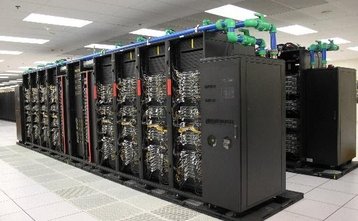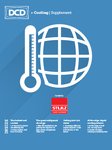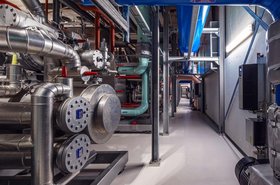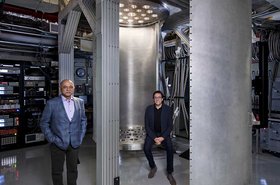Data center liquid cooling has roots dating back to 1964 when IBM announced its first water-cooled product that utilized chilled facility water. Over the following three decades, the industry has grown and other technology companies now provide liquid cooled data center products.
Processor manufacturers continue to release chips with higher TDP, (thermal design power) which results in the need for more effective cooling. Air cooling provides a sufficient method for capturing the heat flowing from servers at densities below 20kW. As IT racks have evolved to exceed this value quite regularly in both HPC and Enterprise data centers, so has the increased need for cooling that is more capable and less expensive to operate. This has created a need for drastically improved heat capture through fully liquid-cooled systems.
DLC (Direct Liquid Cooling) is a technology developed by companies like CoolIT Systems which uses warm liquid rather than cold air to dissipate heat from IT and server components. Directing coolant flow to the hottest components on the server allows for precise high heat capture to occur, resulting in greater component performance, reliability, and rack densities while also providing decreased data center operating expenses as most chillers and/or CRACs can be removed from operation.
Having been in the liquid cooling industry for 20 years this 2021, CoolIT has noticed a growing appetite for liquid cooling in the industry.
Data centers going green
One of the key outcomes in data center liquid cooling is the impressive energy efficiency gains. The physics of liquid cooling vs air cooling makes liquid more effective at capturing heat in small areas which is ideal for the data center applications; and moving the heat to another location where it can be cooled down with lower cost heat exchanging methods such as roof top coils.
Liquid cooling over the past 20 years has developed a reputation for increased environmental efficiency by reducing energy footprints within data centers. CoolIT research notes DLC has a 27 percent reduction in energy use when using warm water, a 12 percent reduction in energy use when using chilled water, and a 10 percent efficiency gain at the server. Between 2015 and 2021 CoolIT solutions have saved approximately 245,542 metric tons of C02 if compared to air-cooled technologies. This is equivalent to the greenhouse gas emissions from 53,048 passenger vehicles driven for one year and 609,285,902 miles driven by an average passenger vehicle. With increasing demands for smaller footprints and higher efficiency, liquid cooling is leading the way for future data center planning.
International supercomputers adopt DLC
Supercomputers around the world are some of the key players finding a need for liquid cooling. These unique facilities are conducting intense research and data analysis and can require the use of tens of thousands of servers to support such initiatives; and the intensity of this work is not decreasing. Often, existing supercomputing facilities are restricted to the physical space where they currently operate and must find ways to expand their computing capabilities within their physical building footprint. DLC is a key problem-solver when addressing this limitation as fully populated racks can be deployed in the same space low-density air-cooled racks once stood. Not only does this reduce costs through energy efficiency and electricity bills but saves organizations in moving to larger facilities and using expensive volumes of cold air to cool their technology.
The Lise Supercomputer, Magma Supercomputer, Cara Supercomputer and Frontera Supercomputer are notable installations providing significant resources to world class scientists and researchers exploring crucial areas such as weather prediction, cancer research and Covid-19 vaccines. These large-scale systems and many other HPC installations are the foundation of some of the world's highest-performing and most efficient data centers in the world. With liquid cooling, these supercomputers can operate at maximum performance, in smaller spaces, and with increased savings on yearly opex.
Consumer trends
The growing demands of liquid cooling customers have evolved and changed over the past 20 years. CoolIT researched customer opinions in the HPC community, and found that :
- Increased performance, efficiency and density are the most important values associated with liquid cooling
- Half of the respondents expect liquid cooling vendors to offer comprehensive product portfolios and be able to complete all commissioning
- Reliability is the #1 concern when choosing liquid cooling vendors
- Glycol based coolant is #1 preference for transfer fluid type
- The average HPC Data Center build in the next three years will be 2MW-3MW, and 3MW+ in five years
- The majority of HPC rack densities in three years will be 60kW-100kW and 100kW+ in five years.
- In 3 years, 80-90 percent of HPC server heat must be captured through liquid cooling (in 5 years, 90-100 percent)
Liquid cooling is a growing industry that has made strong developments. With the desire for increased data center performance, efficiency, and density growing, liquid cooling technology is on the trajectory to eliminate traditional air-cooling systems and be the number one solution for data center requirements.





